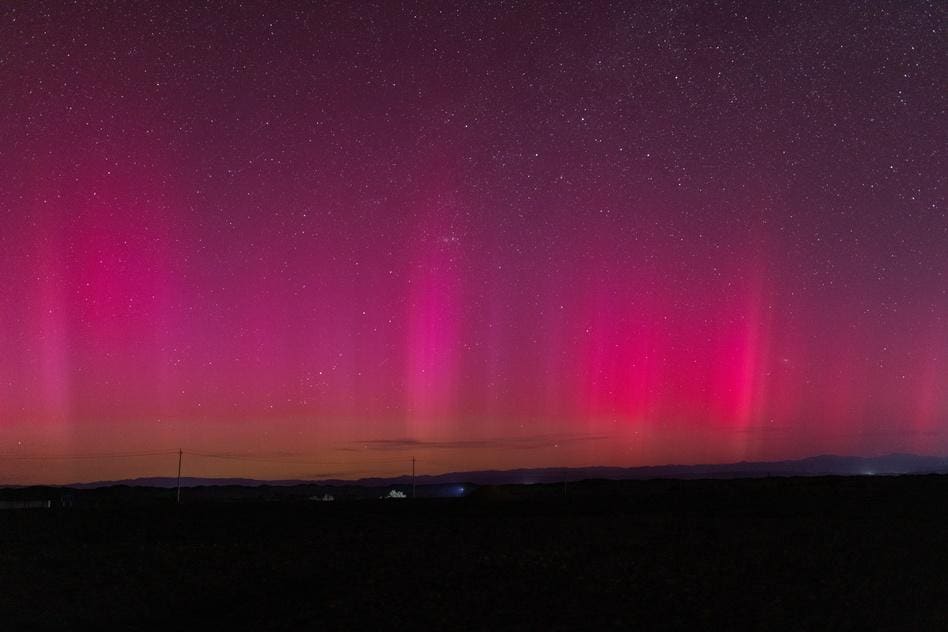Aurora chasers may have one last chance to view the Northern Lights this week as the geomagnetic storm watch is set to end on Thursday. Scientists predict that the aurora will become more active as the sun approaches its latest solar cycle peak, which is expected to occur between late 2024 and 2026. Thursday night’s aurora is expected to have a Kp index of four, causing the lights to move further from the poles and appear brighter to observers under the right viewing conditions.
The recent arrival of coronal mass ejections (CMEs) – eruptions of solar material – to Earth on Tuesday and Wednesday resulted in captivating light shows across many continental U.S. states. A “Cannibal CME,” formed when two CMEs combine to create a massive one, reached Earth on Tuesday, along with a train of smaller CMEs that arrived on Wednesday. NOAA issued geomagnetic storm watches starting Monday, originally set to end on Wednesday but now extended to Thursday. Forecasters anticipate another CME to reach Earth on Thursday, which could cause a moderate G2 geomagnetic storm or a minor G1 geomagnetic storm.
While it is challenging to predict the exact locations where the Northern Lights will be visible, NOAA offers a forecast with potential viewlines that include several U.S. states like Alaska, Washington, Oregon, and others. The lights are typically most active between 10 p.m. and 2 a.m. EDT, and for optimal viewing, travelers should head as close to the poles as possible, away from city lights and light pollution, and monitor weather forecasts for ideal viewing conditions. Smoky skies from wildfires in Canada and California may impact the visibility of the aurora in parts of the northern U.S.
To capture the beauty of the Northern Lights, smartphone cameras are sensitive enough to pick up the aurora even when it is not visible to the naked eye. Visit Iceland, a tourist website for Iceland, recommends turning on night mode to increase smartphone camera exposure for the best pictures. Active sunspots from NOAA Active Region 13664 have been responsible for the recent appearances of the Northern Lights in the U.S. since May. These sunspots caused a G5 geomagnetic storm in May, the strongest storm since the Halloween solar storms in 2003. Researchers believe a Cannibal CME was the reason behind May’s spectacular lights.
Solar Cycle 25, a celestial event that occurs approximately every 11 years, has been causing geomagnetic storms resulting in recent sightings of the Northern Lights. Beginning in 2019, it is estimated that Solar Cycle 25 will reach its peak between late 2024 and early 2026, with projections of 115 sunspots where geomagnetic storms originate. While the peak has not yet been reached, the sun’s activity has been more intense than expected, indicating the possibility of more geomagnetic storms leading up to the peak. Despite the difficulty in predicting when these storms will occur, there is a likelihood of increased activity as the sun approaches its peak.


